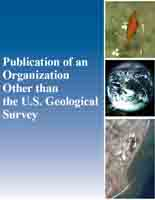Landowner and biologist perceptions of game bird predators and management
Links
- More information: Publisher Index Page (via DOI)
- Open Access Version: Publisher Index Page
- Download citation as: RIS | Dublin Core
Abstract
Nest survival has been identified as one of the most influential vital rates causing population change in game birds, and depredation, often influenced by habitat loss and fragmentation, is the primary cause of nest failure of upland game birds. We were interested in quantifying and comparing the perspectives of landowners and biologists in South Dakota regarding complex predator-prey interactions to improve communication and management efficacy. We developed a questionnaire regarding the following: 1) general attitude statements about game bird species; 2) perceived impacts of 9 factors (e.g., development, pollution, predators) and 13 potential predators on game bird abundances; and 3) attitude statements regarding use of lethal predator control and nesting habitat management practices. A cluster analysis using landowner attitude statements about predator management identified 3 landowner segments that had strong (most supportive; 37%), moderate (moderately supportive; 35%), or weak (least supportive; 28%) attitude statements about lethal predator control. Landowner segments most supportive and moderately supportive of predator control rated predators as the primary negative factor impacting game bird abundances and agreed that predators were the primary cause of game bird abundance declines, whereas the landowner segment least supportive of predator control rated habitat loss as the top factor and disagreed that predators were the primary cause of game bird declines. Biologists rated habitat loss as the top factor negatively impacting game bird abundances and disagreed that predators were the primary cause of game bird abundance declines. Thus, when considering the effectiveness of strategies to reduce nest depredation, most landowners focused on the direct cause of nest failures (predators), whereas biologists focused on an indirect cause (habitat loss). Perception differences among these groups emphasizes the need for better communication on proximate and ultimate factors affecting game bird populations and how these differences may impact management decisions.
Study Area
| Publication type | Article |
|---|---|
| Publication Subtype | Journal Article |
| Title | Landowner and biologist perceptions of game bird predators and management |
| Series title | Wildlife Society Bulletin |
| DOI | 10.1002/wsb.1443 |
| Volume | 47 |
| Issue | 3 |
| Publication Date | May 02, 2023 |
| Year Published | 2023 |
| Language | English |
| Publisher | The Wildlife Society |
| Contributing office(s) | Coop Res Unit Leetown |
| Description | e1443, 15 p. |
| Country | United States |
| State | South Dakota |
| County | Faulk County, Hand County |
| Other Geospatial | north-central South Dakota |


